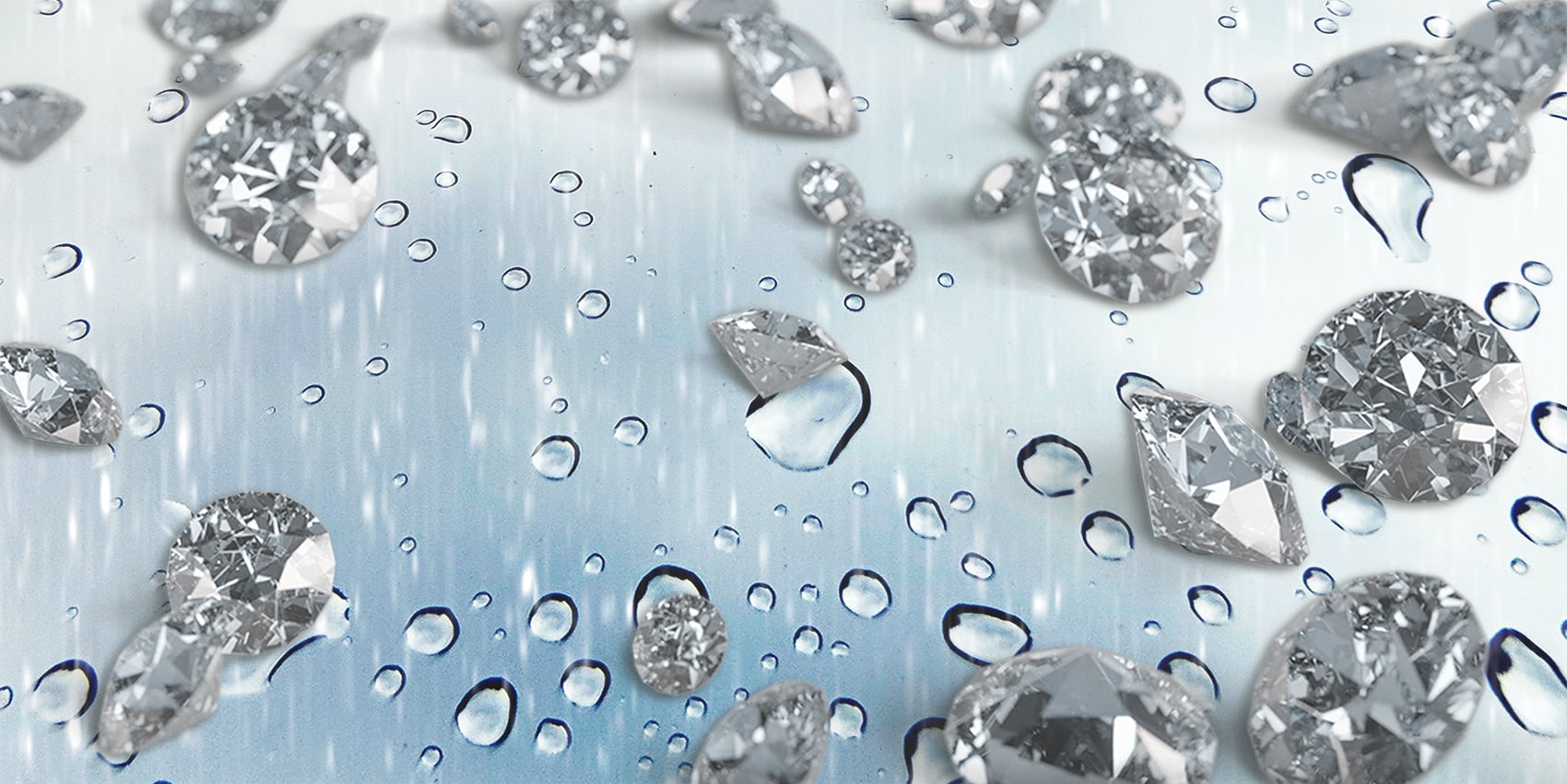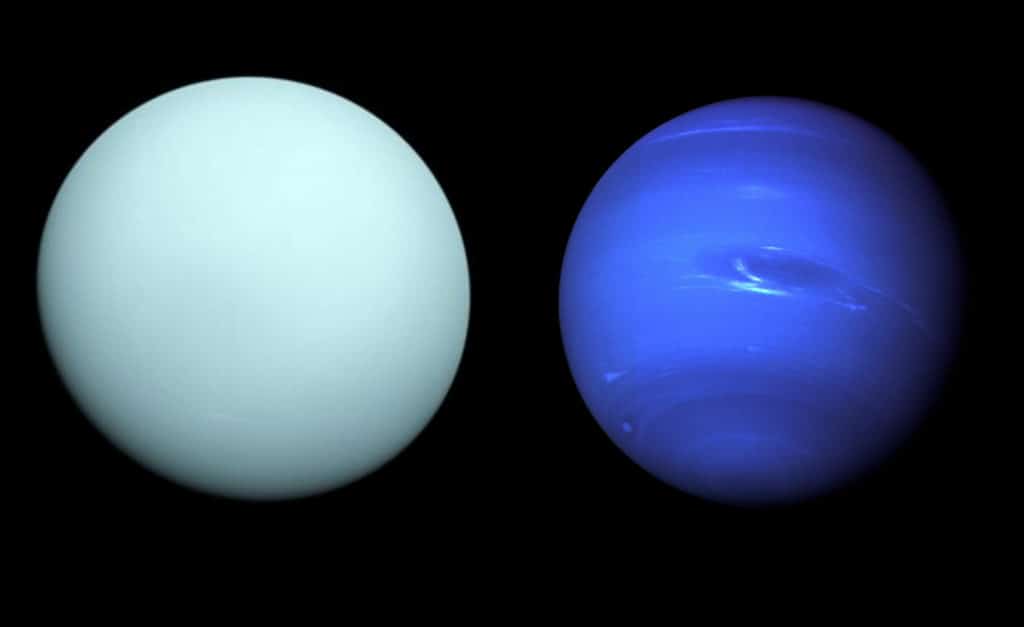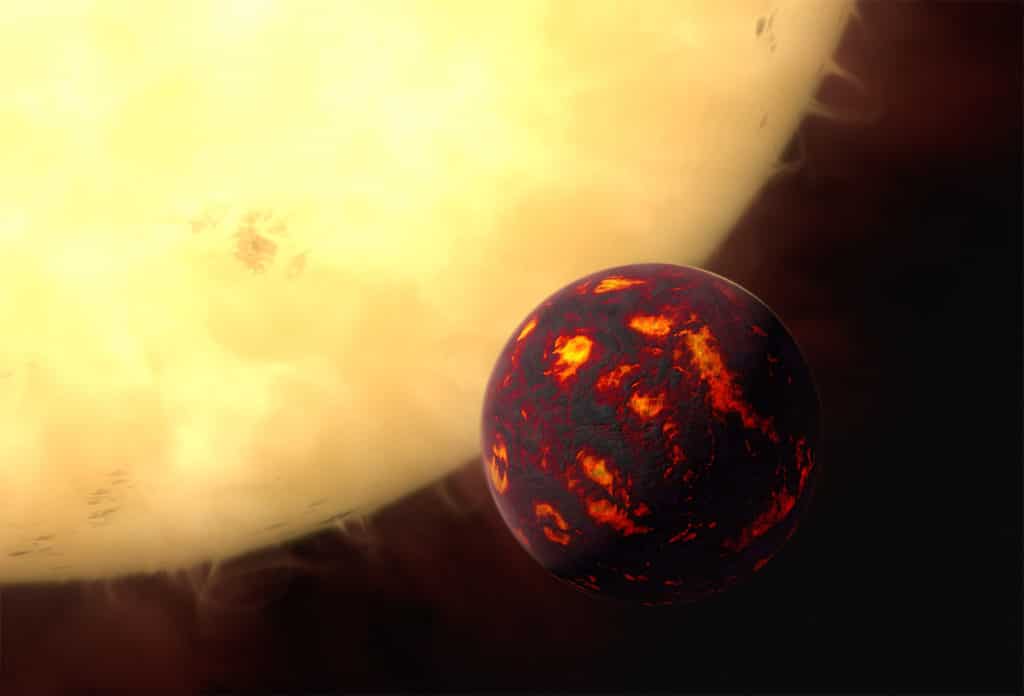Blog
Home » Blog – The Diamond Blog » IT MAY BE RAINING DIAMONDS A MERE 4.33 BILLION KILOMETERS AWAY
Focus on

There has long been speculation among scientists about vast quantities of diamonds, or possibly even planets comprised almost entirely of diamonds, located outside of our solar system. A new study published in the academic journal, Science Advances, confirms it most probably is in fact closer to home, on Uranus or Neptune.
“Closer,” of course is relative term. While both planets are part of our solar system, they still are fair distance from here. Uranus lies 2.88 billion kilometers from Earth, and Neptune is 4.33 billion kilometers away. Tt’s most probably premature to break out the champagne.
What the study refers to is form of diamond rain, or to be more precise, diamond precipitation, which according to Dominik Kraus, a physicist at Germany’s HZDR research lab who is the study’s lead author. But it is a not the type of rain that one is familiar with on earth.
Uranus and Neptune are both ice giants, meaning planets that are composed mainly of elements heavier than hydrogen and helium, such as oxygen, nitrogen, sulfur, and also carbon – the base material from which diamonds are made. Scientists have theorized that diamonds may rain down from the slushy outer layers of the planets’ to their rocky interiors in a form of rain.
“The chemistry at these conditions is very complex and modeling extremely difficult. ‘Anything can happen’ is a typical phrase when discussing such scenarios with theorists,” Kraus said, in an interview with Vice. “Indeed, there were some predictions showing that the presence of oxygen is helping [carbon separate from hydrogen] and diamond formation, but also ideas that it may be the other way around.”
“We found that the presence of oxygen enhances diamond formation instead of preventing it, making ‘diamond rain’ inside those planets a more likely scenario,” he added.
THE PRACTICAL APPLICATIONS OF DIAMOND RAIN
For the scientists involved in the study, there are practical application to the research. They are searching for ways to produce nano-diamonds, which today are increasingly being used in a variety of fields, including drug delivery, medical sensors, non-invasive surgery, and quantum electronics.
Kraus and his team tried to create nanodiamonds using polystyrene, , or Styrofoam, which contains the same elements of carbon and hydrogen found on Neptune and Uranus. They bombarded it with a high-powered X-ray laser at the SLAC National Acceleratory Laboratory in California, heating the material to around 4730 degrees Celsius, and compressing it by 150 gigapascals, which is similar to conditions found in the interior of the two planets.

Ice giant cousins Uranus, 2.88 billion kilometers from Earth, and Neptune, 4.33 billion kilometers away, as seen by NASA’s Voyager 2 spacecraft, which traversed the solar system. Photo credit: Wikipedia Commons.
The experiment was unsuccessful, but they decided to try again using polyethylene terephthalate (PET) instead. It is plastic that things like food containers and water bottles are made from. It also contains oxygen, which is even more similar to chemical composition of Uranus and Neptune.
“We found that the presence of oxygen enhances diamond formation instead of preventing it, making ‘diamond rain’ inside those planets a more likely scenario,” Kraus told Vice. “We [also] see that diamonds grow larger for higher pressures and with progressing time in the experiments.”

An artist’s impression of 55 Cancri e in front of its parent star, which was created using observations made with the NASA/ESA Hubble Space Telescope. Photo credit: Wikipedia Commons.
PLANETS AND CRATONIC ROOTS
While billions of kilometers away, Neptune and Uranus are considerably closer to earth than 55 Cancri e, which is planet in another solar system about 40 light-years from Earth, in the Cancer Constellation Cancer of our own Milky Way. Its parent star, 55 Cancri, the equivalent of our sun, can be seen from Earth with the naked eye.
55 Cancri e is composed mainly of carbon. Some of that is likely to be in the form graphite, but scientists believe that at least a third of the planet’s mass is pure diamond.
It should be noted also that 55 Cancri e has a radius twice that of Earth, and a mass eight times greater. According to Peter Cohan, a contributor to Forbes magazine, the value of 55 Cancri e’s diamond deposits are about $26.9 nonillion, which is $26.9 followed by 30 zeros.
But we do not even have leave the earth’s atmosphere to find massive supply of natural rough diamonds. According to scientists at the Massachusetts Institute of Technology (MIT), there may be a quadrillion tons of diamonds hidden in the earth’s cratonic roots, which are sections of rock beneath the center of most continental tectonic plates.
It will not be easy to get there, however. The world’s deepest mining operation, the Mponeng gold mine in South Africa, is less than four kilometers underground. The cratonic roots, in contrast, lie at depth of between 160 and 320 kilometers beneath the earth’s surface.
Diamond rain sounds like the easier option.
